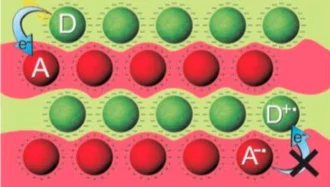Polyelectrolyte multilayers (PEMs) with stratification of the internal structure were assembled from statistical amphiphilic copolyelectrolytes of opposite charges. These polyelectrolytes organize in aqueous solutions into micellar structures with fluoroalkyl and aromatic nanodomains, respectively, that were also preserved after deposition as thin films via layer-by-layer (LbL) electrostatic self-assembly. The unimolecular micelles, formed due to statistical compositions of amphiphilic polyelectrolytes used, were shown to suppress chain interdiffusion between adjacent layers in resulting micellar PEMs, as evidenced by spectroscopic ellipsometry, atomic force microscopy (AFM), and neutron reflectometry (NR) measurements. Additionally, hydrophobic cores of the micelles were used as hosts for photoactive molecules, namely, ferrocene and perfluorinated magnesium phthalocyanine. Stratified micellar multilayers were then deposited as hollow capsules using CaCO3 microparticles as templates. Photoinduced electron transfer (PET) between ferrocene and phthalocyanine solubilized in the polymer micelles was demonstrated to occur efficiently inside the stratified, polyelectrolyte walls of the capsules, due to the polarity gradient created by the incompatible aromatic and fluoroalkyl domains. The obtained results present a new approach to construct well-organized, self-assembled nanostructured materials for solar energy conversion.
Reference: M. Kopec et al, Chemistry of Materials 28, 2219 (2016)
Read full article: here


